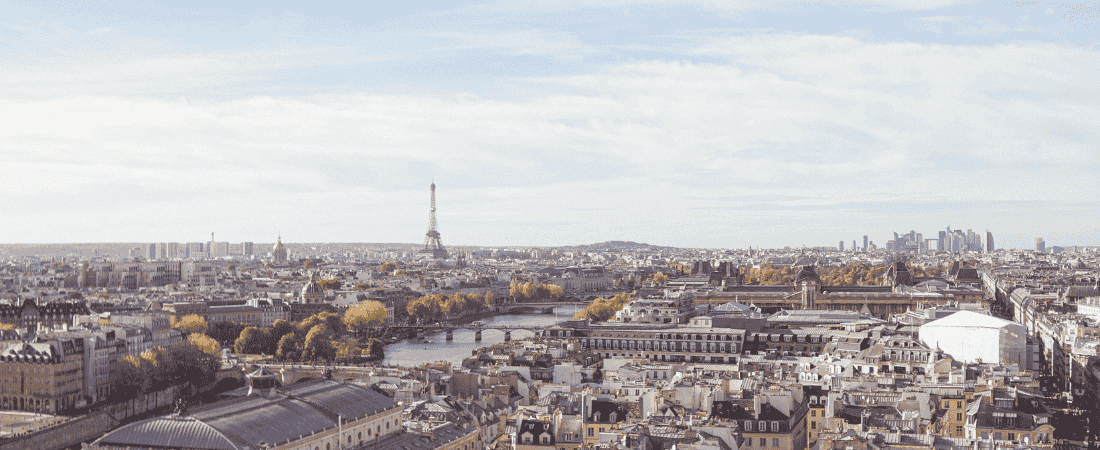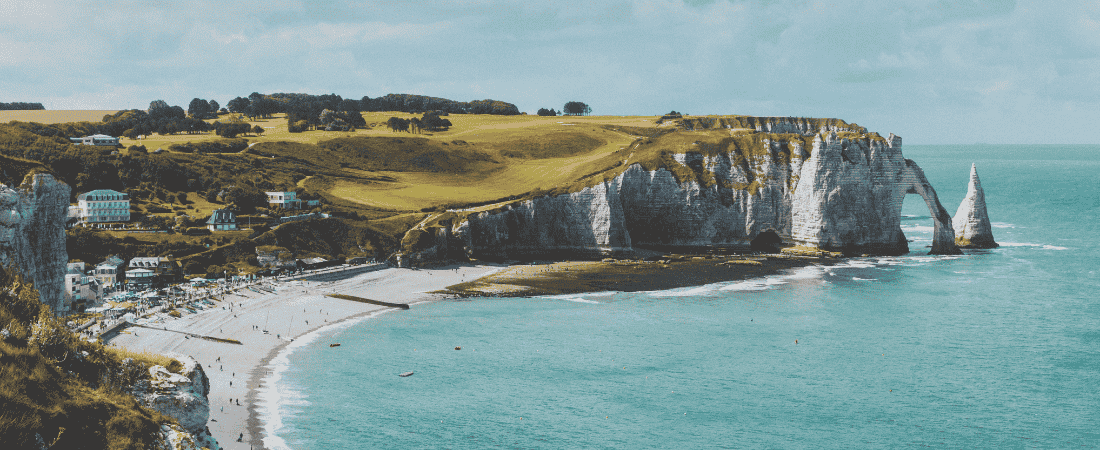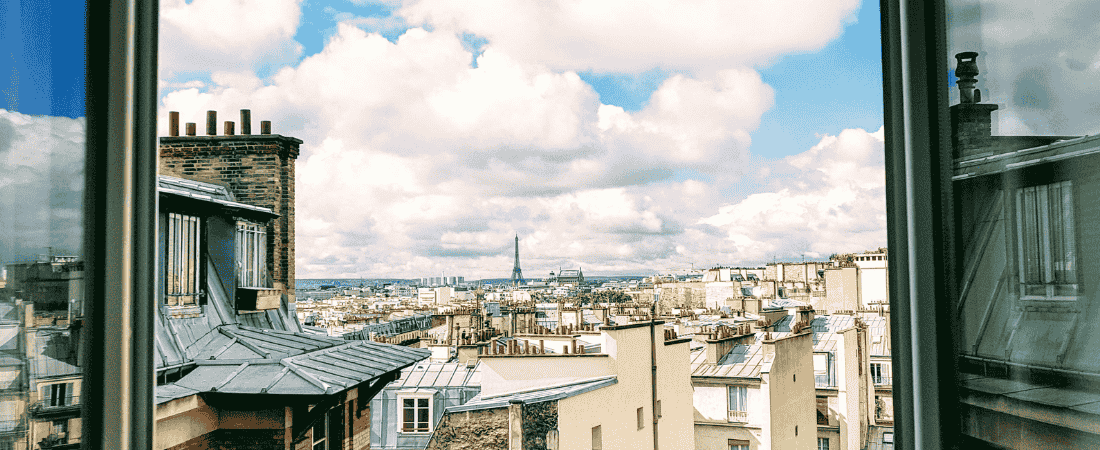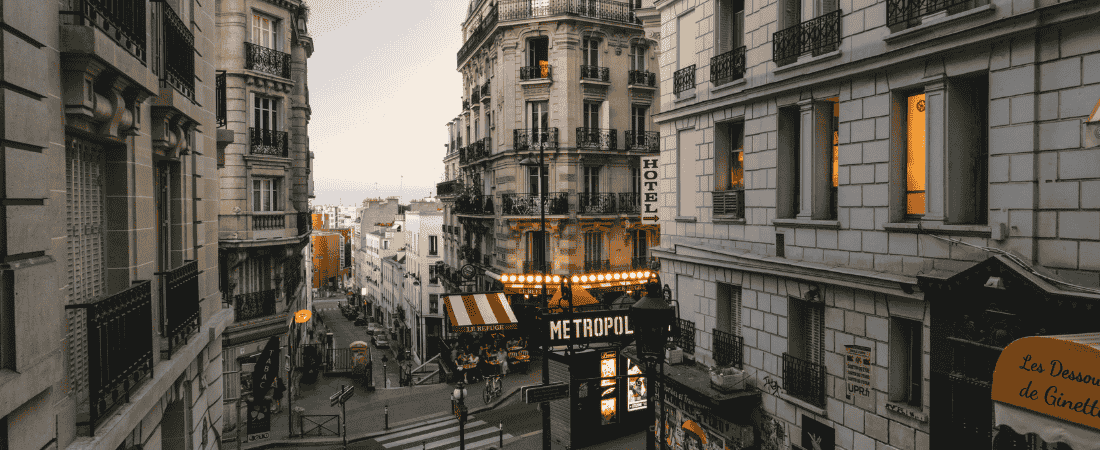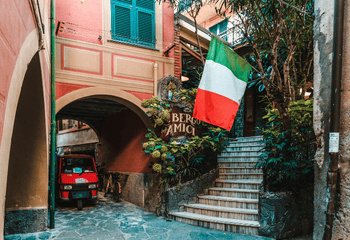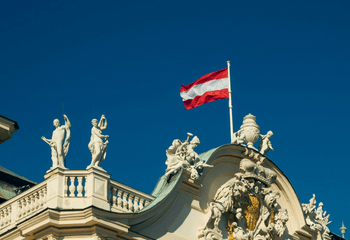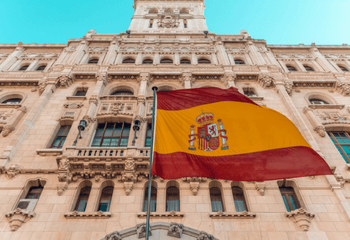Learn More About France
General Information
· Country Name: France (officially: French Republic)
· Continent: Europe
· Capital: Paris
· Population: around 68,000,000
· Area: about 551,000 km²
· Language: French
· Currency: Euro (EUR)
Landscape
Beaches, Mountains, Rivers, and Vineyards: France in Every Direction
France has a little bit of everything when it comes to landscapes. In the southeast, there are the Alps with snowy peaks, perfect for skiing and snowboarding in winter and hiking or mountain biking in summer. Mont Blanc, the highest mountain in Western Europe, is located there.
In the southwest, the Pyrenees form a natural border and offer more rugged mountains and stunning views. Between the mountain ranges, you’ll find green hills, rivers, and farmland. The central part of France has wide plains, rolling hills, and small villages surrounded by sunflower fields or vineyards, especially in regions like Burgundy or the Loire Valley.
The north and west have long stretches of coastline, cliffs, and sandy beaches along the Atlantic Ocean and the English Channel. In the south, the Mediterranean coast is warmer and sunnier, with turquoise water, beach towns, and palm trees in places like the French Riviera.
France is also home to some beautiful rivers like the Seine, Rhône, and Loire. Many cities and towns are built along rivers, and you’ll often see bridges, boats, or people walking along the water. Forests, lakes, and national parks are spread throughout the country, so it’s easy to find nature no matter where you are.
Culture & Traditions
Baguettes, Bises, and Bon Appétit: What’s Normal in France
French culture is known for its strong focus on art, fashion, food, and history. People take pride in their local traditions, and each region has its own specialties, from food and dialects to festivals and customs.
Food is a big part of daily life. Meals are seen as something to enjoy, not rush through. Bakeries (boulangeries) are everywhere, and grabbing a fresh baguette or croissant is part of many people’s daily routine. Some well-known French dishes include crêpes, ratatouille, quiche, cheese, and a huge variety of pastries. Bread and cheese are a big part of everyday meals in France, and there are so many different kinds to try.
Traditions vary by region, but there are national celebrations too. Bastille Day on July 14th is France’s national holiday, with fireworks, parades, and parties. Christmas is widely celebrated, and in some regions, there are unique traditions like putting out shoes on the night of December 5th so Saint Nicolas can leave small gifts or sweets in them the next morning.
Art, literature, and cinema are also super important in French culture. Museums, concerts, and film festivals are common, and there’s a strong value placed on creative expression.
Education System
Inside a French High School: Schedules, Subjects, and Style
In France, school is divided into different levels: école primaire (elementary school), collège (middle school), and lycée (high school). Students usually attend collège from ages 11 to 15 (grades 6–9) and then move on to lycée, which includes three years: seconde, première, and terminale.
The school year starts in early September and ends in early July, with several breaks throughout the year: a two-week fall break, two weeks at Christmas, two weeks in February, and two weeks in spring. Summer vacation is around eight weeks long.
A typical school day starts around 8 a.m. and can go as late as 5 or 6 p.m., with a long lunch break in the middle. Wednesdays are sometimes shorter days, especially in lower grades. Students follow a fixed schedule with different subjects each day.
Subjects include French, math, science, history, geography, philosophy (especially in the final year), and at least one foreign language—usually English, Spanish, or German. Students are graded out of 20 points, and report cards are taken pretty seriously.
In lycée, students choose a path or specialty depending on their interests and future plans. Options might include literature, science, economics, or technology tracks.
After-school activities like sports, music, or theater may be offered, but many are organized outside of school by local clubs or community centers. Joining one is a great way to make friends and experience local life.
Daily Life
How French Teens Spend Their Time
Life in France tends to follow a pretty steady routine. People usually eat dinner later than in some other countries—often around 7:30 or 8:00 p.m.—and meals are more social and relaxed. Lunch is often seen as the biggest meal of the day, especially on weekends or holidays.
Public transportation is widely used, especially in cities. Buses, trams, and trains are common, and many students use them to get to school. In smaller towns, biking or walking is also pretty normal.
Teenagers often hang out in cafés, parks, or town squares. Going to the movies, shopping, or just taking a walk through town are popular ways to spend time. In warmer months, outdoor markets and festivals are also a fun part of local life.
Fun Fact
France has more than 40,000 castles (châteaux), ranging from medieval ruins to massive palaces like the famous Château de Versailles!

